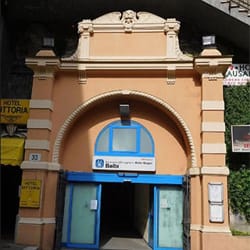The garden has always been an important element in human life.
Depending on the historical periods, the appearance of the garden has undergone changes, shaping from time to time on the new stylistic needs of the moment.
The English garden is also known as a landscaped or informal garden.
Since I have a friend who is studying these things in her botany studies, I have inquired more about it and I did some research myself.
This composition was born in England at the beginning of the 1700s, subsequently it spread rapidly throughout the European continent, in particular it got to be very much appreciated in Germany.
The English-style garden was born primarily as a reaction to the widespread designs of the Italian garden, also known as formal and developed from the 16th century onwards, and the Baroque garden, which spread from the 17th century in France.
The formal Italian garden and French garden models were successfully known throughout Europe and were based mainly on rigorous geometric symmetry. The English-style garden went beyond this rigid formal model, arriving at a new design approach based on the natural spontaneity of the botanical elements that make up the garden, even though it is still an artificial work created by man.
The intent was to regain contact with nature, leaving it free to grow spontaneously avoiding any type of formal trimming.
It was an innovative concept capable of completely renewing the art of gardens and the spread throughout the European territory was rapid and lasted throughout the eighteenth century.
I love English style gardens because you can easily relax in them, have a picnic or lie down on the grass whereas some more formal gardens are good just to look at.
It’s also true that these panoramas full of spontaneous vegetation instill a sense of complete tranquility and serenity in the observer though.
It is easy to understand that the intent of these new gardens is to propose a free landscape, in stark contrast to the constraint of previous formal models. We know that nature is irregular and it cannot be enclosed in rigid design schemes as in the case of Italian and French gardens.
In the English garden, nature is free, man no longer wants to dominate it so the garden is no longer an element detached from nature, but is a continuation of it and physical boundaries no longer exist.
I have read that in English style gardens we usually find maples, oaks, beech, chestnut, hazelnut, alder and elm trees as well as flower species of all kinds.
The English garden pleases everyone because it is spontaneous, each plant inside it is placed in an apparently random way, without any type of pattern and since nature is left free to grow every garden is different from the next.
There are several typical English style gardens here in London such as the Chelsea Physic Garden, Dixter, The Courts and Hidcote.
The English garden usually includes lawns contrasted with groves of trees and recreations of classical temples, ruins and other buildings with picturesque architecture, designed to recreate an idyllic landscape. In addition, it contains a series of romantic elements like ponds and bridges that are always present. Sometimes the gardens also have Chinese pavilions.
To create the English landscape it is necessary to know what its philosophy is, that is that nature is free and capable of itself without human intervention.
My friend told me you have to choose the right plants, which will then be placed in the ideal position with respect to solar exposure, soil moisture and other important factors, in order to be able to perfectly integrate the natural elements with artificial ones.































































